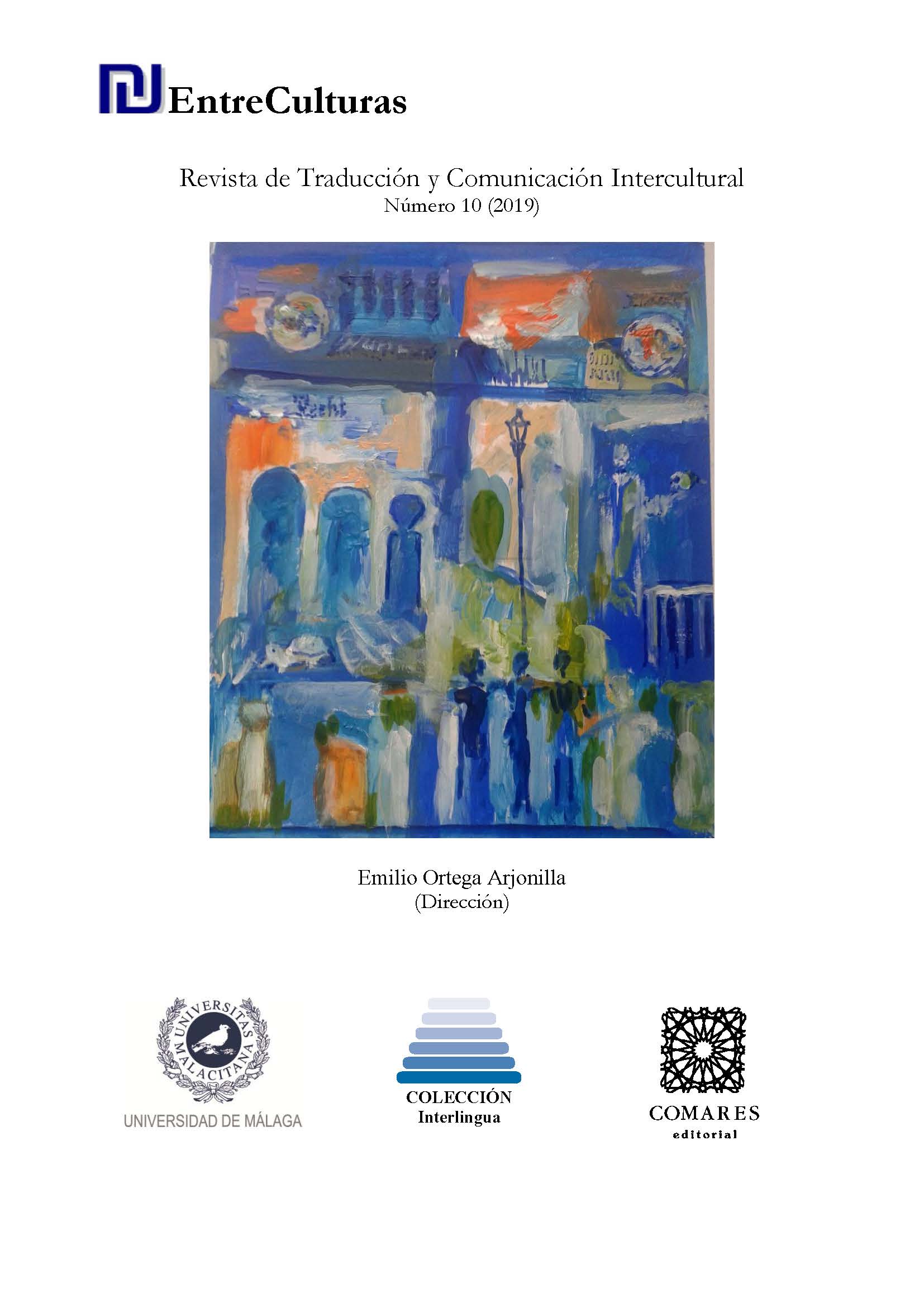The translation movement at the House of Wisdom of Baghdad and the School of Translators of Toledo
DOI:
https://doi.org/10.24310/Entreculturasertci.v1i10.9569Keywords:
Translation movement, House of Wisdom of Bagdad, School of Translators of ToledoAbstract
The translation movement at the House of Wisdom of Baghdad and the School of Translators of Toledo continues to be the object of many historical and descriptive studies, which try to clarify the contribution of both institutions, each one separately, in the transmission of knowledge and Sciences from one culture to another. The motivation of the present study is determined by the need to undertake comparative studies that highlight points of convergence and divergence between the two translation projects. Comparative studies of this type also represent a fundamental contribution in consolidating the investigation of the history of translation, searching for common links between historical translation projects.
Downloads
Metrics
References
?A?a All?h, Ji?r A?mad (1989): Bayt al-?ikma f? ?a?r al-?abb?siyy?n. El Cairo: D?r al-fikr al-?arab?.
Barroso, Graciela (2003): "Alfonso X y la Escuela de Traductores de Toledo: Notas para un estudio de políticas lingüísticas". Luventicus (Academia de ciencias), núm. 1, pp. 1-10. Disponible en: http://www.luventicus.org/articulos/03AAL005/resumenypalabrasclave.html (Fecha de consulta: 5/8/2016).
Delisle, Jean (2003): "La historia de la traducción: su importancia para la traductología y su enseñanza mediante un programa didáctico multimedia y multilingüe". Íkala (Revista de lenguaje y cultura), vol. 8, núm. 14, pp. 221-235.
Durant, W. (1988): Qi??at al-?a??ra. Beirut: D?r al-??l.
Farr?j, ?Umar (1983): T?r?j al-fikr al-?arab? ilà ayy?m Ibn Jald?n. Beirut: D?r al-?ilm li-l-mal?yy?n, 4ª ed.
García Castaño, Diego (2009): Las rutas de los mercaderes y el alborear de la matemática. Alicante: Editorial Club Universitario.
García Junceda, José Antonio (1982-83), "La filosofía hispano-árabe y los manuscritos de Toledo: Una meditación sobre el origen de la escuela de traductores". Anales del Seminario de Historia de la Filosofía, Ed. Univ. Compl. Madrid, vol. 111, pp. 65-93.
Gargatagli, Marietta (1999): "La historia de la escuela de traductores de Toledo". Quaderns (Revista de traducció), 4, pp. 9-13.
?amd?w?, ?am?l (2006): ?Al-luga al-?arabiyya wa-tadr?s al-?ul?m", D?w?n al-?arab, disponible en: http://www.diwanalarab.com/spip.php?page=article&id_article=7094 (fecha de consulta: 18/03/2016).
Ibn Jaldún (2004): Al-Muqaddima. Damasco: D?r Ya?rib.
Ibn ???id al-Andalus? (1912): ?abaq?t al-umam. Beirut: al-ma?ba?a al-k???l?kiyya.
Ibn ?ul?ul al-Anadlus?, Sulaym?n (1955): ?abaq?t al-a?ibb?? wa-l-?ukam??. El Cairo: Al-ma?had al-?ilm? alfarans? li-l-a??r al-šarqiyya.
Márquez Villanueva, Francisco (1996): "In Lingua Tholetana", en La escuela de traductores de Toledo. Toledo: Diputación Provincial de Toledo, pp. 23-34.
Márquez Villanueva, Francisco (2004): El concepto cultural alfonsí. Barcelona: Bellaterra, 2ª ed.
Menéndez Pelayo, Marcelino (1956): Historia de los heterodoxos españoles. Madrid: BAE, 2 vol.
Menéndez Pidal, Ramón (1956): España, eslabón entre la Cristiandad y el Islam. Madrid: Espasa-Calpe.
Mift??, M??nis (2013): "Al-tar?ama ?ind al-?arab: min ?ahd al-jal?fa al-Ma‘m?n ilà madrasat ?ulay?ila". AlQuds al-?arab?, núm. 7495, 23 de julio de 2013, disponible en: http://www.alquds.co.uk/?p=65741 (fecha de consulta: 14/4/2016).
Mohamed-Essawy, A. T. (2001): Historia de la traducción en la cultura árabo-islámica: siglos VII-XII. Madrid: Instituto Egipcio de Estudios Islámicos.
O'Leary, De Lacy (2003): Arabic Thought and its Place in History. New York: Dover publications.
Pérez Cañada, Luis Miguel (2014): Entrevista realizada por Ahmed Yamany bajo el título ?Al-mustašriq al-isb?n? Luis Miguel Cañada: al-kutt?b al-mi?riyy?n al-šab?b yaq?d?n ?arakat al-tagd?d f?-l-??lam al-?arab??. Ajb?r al-adab, núm. 1191, 1/2/2014. Disponible en: http://www.dar.akhbarelyom.com/issuse/detailze.asp?mag=a&field=news&id=7640 (Fecha de consulta: 21/5/2016).
Sánchez-Albornoz, Claudio (1965): "El Islam de España y el Occidente", Settimana di Studio dei Centro italiano suii'Aito Medioevo, XII, Spoleto, pp. 275-293. Reeditado con escasas modificaciones en Espasa Calpe, Col. Austral, Madrid, 1974.
Steiger, Arnald (1985-1986): "Tradición y fuentes islámicas en la obra de Alfonso X el Sabio", Revista del Instituto Egipcio de Estudios Islámicos, XXIII.
Vernet, Juan (1997), Fa?l al-Andalus ?alà ?aqafat al-garb. Damasco: Išb?liyya Ed. (trad. al árabe de Nih?d Ri??).
Downloads
Published
How to Cite
Issue
Section
License
All contents published in Entre culturas. Revista de traducción y comunicación intercultural are protected under the Creative Commons Attribution-NonCommercial-ShareAlike 4.0 International (CC BY-NC-SA 4.0) license. All about this license is available in the following link: <http://creativecommons.org/licenses/by-nc-sa/4.0>
Users can copy, use, redistribute, share and exhibit publicly as long as:
- The original source and authorship of the material are cited (Journal, Publisher and URL of the work).
- It is not used for comercial purposes.
- The existence of the license and its especifications are mentioned.
There are two sets of authors’ rights: moral and property rights. Moral rights are perpetual prerogatives, unrenounceable, not-transferable, unalienable, imprescriptible and inembargable. According to authors’ rights legislation, Entreculturas. Revista de traducción y comunicación intercultural recognizes and respects authors moral rights, as well as the ownership of property rights, which will be transferred to University of Malaga in open access. The property rights are referred to the benefits that are gained by the use or the dissemination of works. Entreculturas. Revista de traducción y comunicación intercultural is published in an open access form and it is exclusively licenced by any means for doing or authorising distribution, dissemination, reproduction, , adaptation, translation or arrangement of works.
Authors are responsable for obtaining the necessary permission to use copyrighted images.





7.png)
